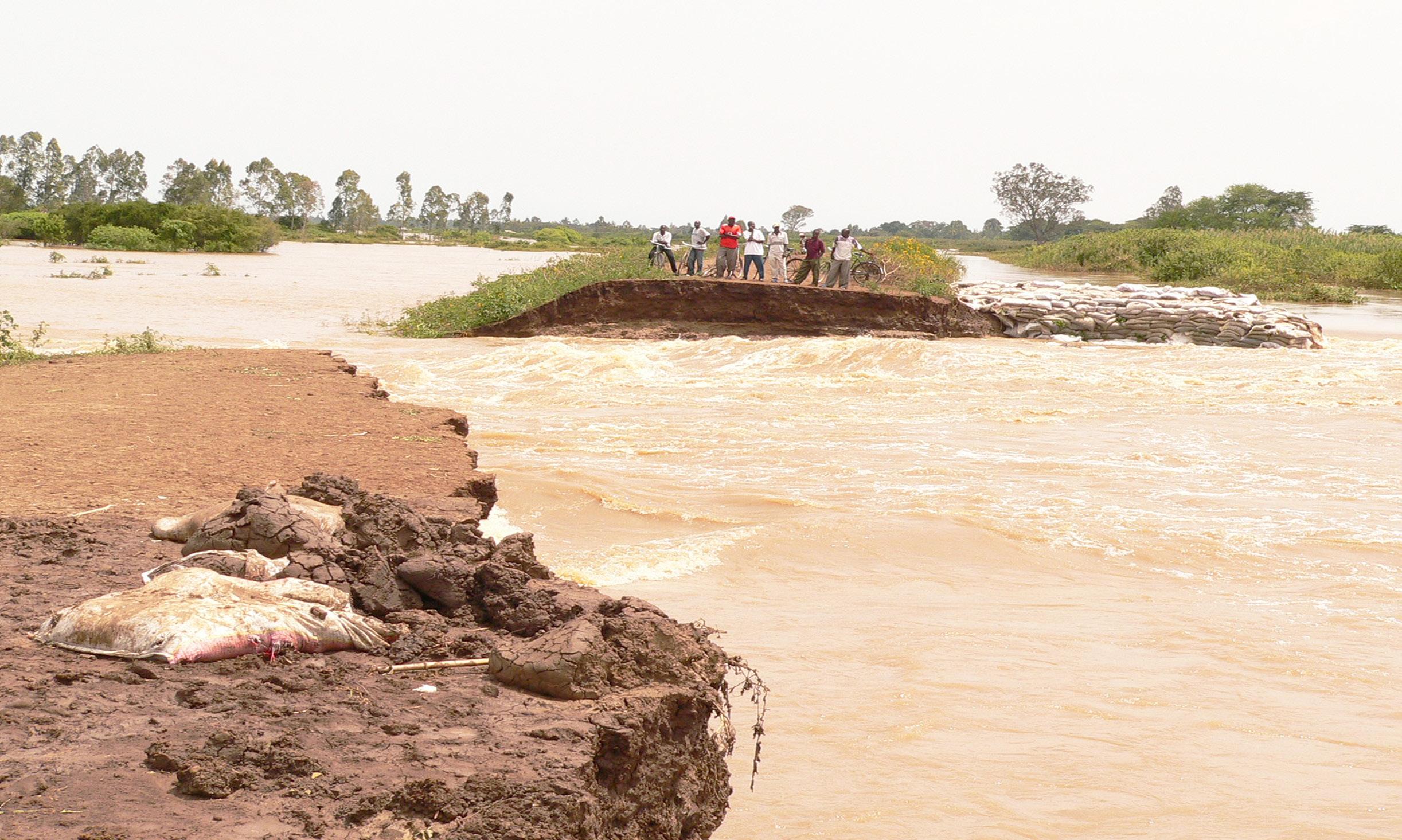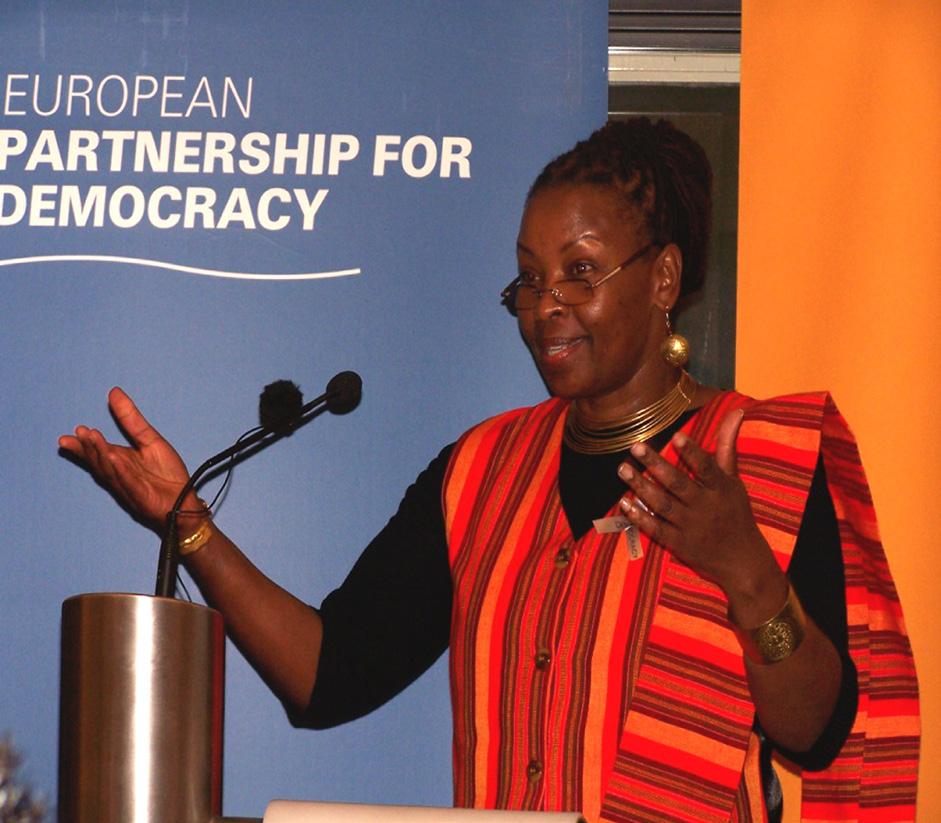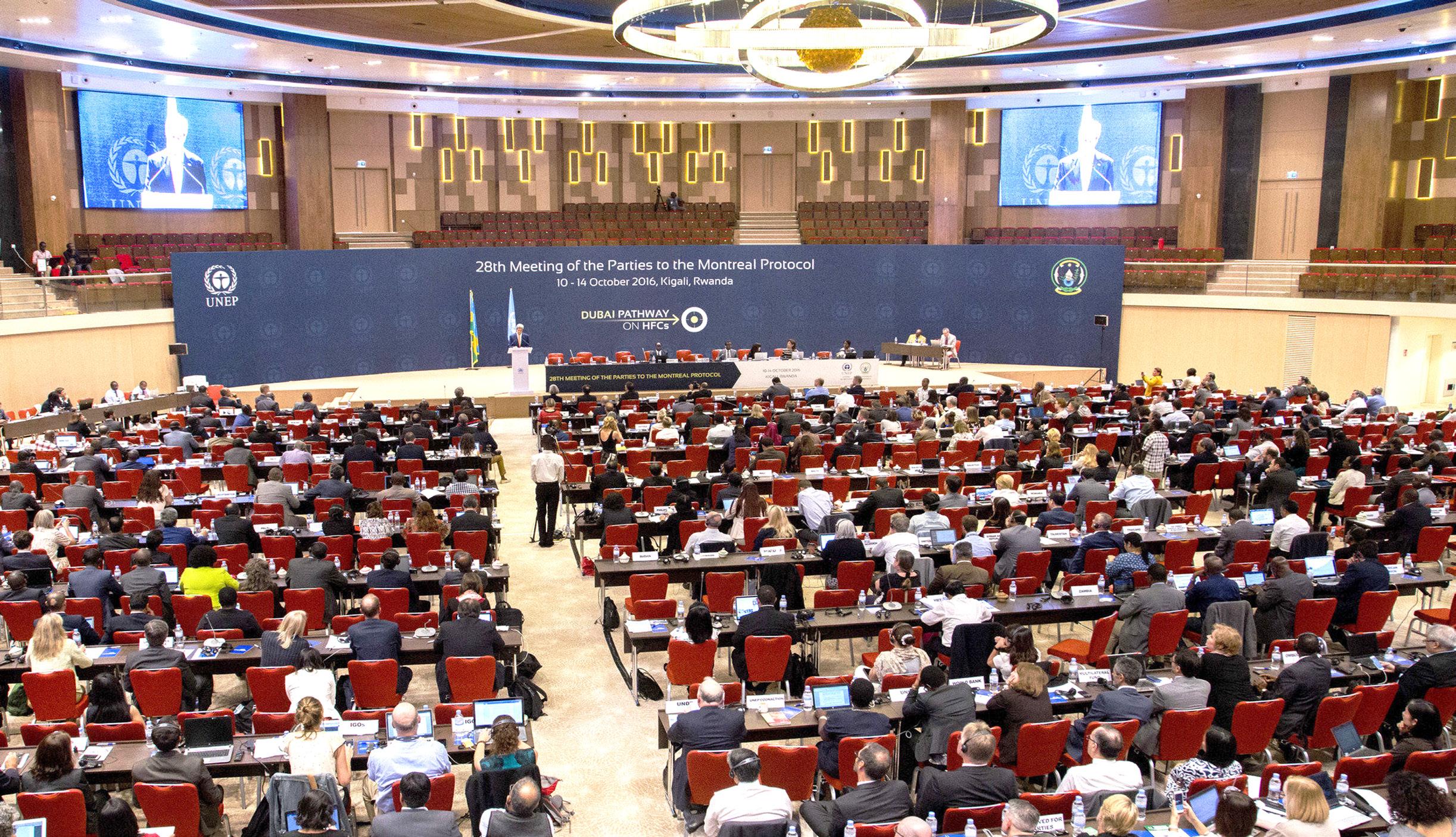
30 minute read
Business Alliance embraces sustainable development goals
BUSINESS ALLIANCE:
Embraces Sustainable Development Goals Through the SDGs, inclusive business has reached a “tipping point” and is changing the way business is done.
Advertisement
By Staff Writer
Business Call to Action (BCtA) held its 2016 Annual Forum on the sidelines of the 71st UN General Assembly (UNGA), with a focus on “inclusive business” and how it can contribute to the Sustainable Development Goals (SDGs). BCtA launched two publications during the Forum: a joint report and toolkit to guide companies toward sustainable practices, produced with Deloitte and the UN Development Programme (UNDP); and a joint report produced with the Global Reporting Initiative (GRI) on measuring business’ contributions to the SDGs.
BCtA is a multilateral alliance among donor governments and UNDP, which hosts the Secretariat. Its member companies apply inclusive business models to engage people at the “base of the economic pyramid” (BoP) as consumers, producers, suppliers and distributors of goods and services, to contribute to development. Paula Pelaez, head of BCtA, highlighted the new commitments to inclusive business objectives that had been made by BCtA members in the past year. Magdy Martinez-Soliman, UNDP, called on businesses to demonstrate that social good and sound business goes hand-in-hand, and that their core processes facilitate the creation of an inclusive economy.
Keynote speaker Jayanth Bhuvaraghan, Essilor, reported that over US$200 billion is lost each year in productivity due to uncorrected vision problems, making vision screening and accessible care a precondition for the SDGs’ achievement. He underscored the need for scalable business models that are financially sustainable, and adapting these models to meet the needs of different consumers. By tapping into business potential in BoP markets, said Bhuvaraghan, businesses can develop a loyal consumer base, sowing the seeds for long-term growth.
The seventh annual Forum, which convened on 22 September 2016, in New York, US, gathered leaders from BCtA member companies, and officials from governments, donors, the UN and civil society. In a panel discussion on ‘Greater impact and scale for the SDGs,’ held in partnership with Business Fights Poverty, moderator Laura Gitman, Business for Social Responsibility (BSR), said the SDGs provide a blueprint to help businesses coordinate their work for sustainability. Panelists emphasized the SDGs as an opportunity for companies to benefit low-income communities through their core businesses. To achieve local production and distribution, they noted the need for an enabling policy environment, and mitigating the risks of supply limitations and restrictive regulations. Speakers also: said companies can mainstream sustainability at the senior-management level by basing executive compensation on non-financial objectives; and supported measurement of social as well as economic impacts.
In a panel on ‘Supporting inclusive business through multi-stakeholder action,’ moderated by Marcos Neto, UNDP, speakers agreed that the SDGs are transforming the idea of partnerships, from “opportunistic financial arrangements” into multisector collaborations focused on common objectives and shared values. They said transparency is a building block of sustained partnership. In order to earn trust, said panelists, companies must collect data on operations in each country to demonstrate concrete social, environmental
and economic impacts.
At a breakout session on guiding companies toward sustainability, Sahba Sobhani, UNDP, highlighted the joint report and toolkit from BCtA, Deloitte and UNDP, titled ‘Uncharted Waters: Blending Value and Values for Social Impact Through the SDGs.’ W. Robert de Jongh, Deloitte, argued that inclusive business has reached a “tipping point” and is changing the way business is done. At the same time, he said, the SDGs are creating a common framework for business action.
Speakers also highlighted lessons on “maturing” toward inclusive business practices, citing multinational pharmaceutical company Novartis’ strategy to bring health-seeking behavior and health care to BoP markets; offgrid energy company BuffaloGrid’s innovative response to rural people’s energy needs; and healthmonitoring company Dimagi’s customizable technology platform. The panelists agreed that scaling up business while serving the BoP takes patience and perseverance, cannot be undertaken in isolation, and requires continually assessing impacts and adapting business models to meet customers’ needs profitably. While start-ups face challenges as new entrants, established businesses must often disrupt their industries from within. Finally, BCtA and GRI presented findings from their joint report, titled ‘Measuring Impact: How Business Accelerates the Sustainable Development Goals.’ Members of the publication team said the report takes a “first look” at how private sector measurement and reporting can help achieve the SDGs. Based on consultations with businesses, the report shows that: “business” is not a homogenous group, and SMEs in particular need capacity building to measure and report on sustainability; policies can encourage greater monitoring and measuring of business’ impact on sustainability issues; and businesses can form partnerships to support measuring and reporting of their impacts.
Based on consultations with governments, the publication team reported that data on companies’ SDG contributions can help governments shape development plans and strategies, including to incentivize greater progress where Goals are being “left behind.” They added that governments’ own statistical data will not be adequate to fully measure all SDG indicators in every country, and that most countries consulted for the report have a mechanism to interact with businesses on SDG reporting, or are currently establishing such a mechanism.
In a panel discussion moderated by Pelaez, Anuj Mehra, Mahindra Rural Housing Finance Ltd., said his company provides home loans to people in villages and rural areas in India. Part of the loan process is updating land records to reflect current ownership, which Mehra said might be the company’s “biggest social impact.” He said the company studies its impacts on SDGs 1, 3, 5, 6 and 11, and has found that a healthy home reduces hospital visits for the family (SDG 3), and that women are increasingly co-borrowers (SDG 5). Mehra said Mahindra will use the findings in its branding and business strategy, underscoring that measurement and reporting can be in a company’s self-interest. Christian Jahn, Inclusive Business Action Network (IBAN) Executive Director, echoed that reporting can create value for a company, beyond just complying with regulations.
Punjanit Leagnavar, GRI, reported that when companies in Colombia report on their impacts, six of the top ten issues they report on relate to SDG 8 (Decent work and economic growth). She suggested that governments can use such information to help align private sector reporting with national priorities. Leagnavar also said governments need “contextualized data,” and that a framework like GRI can aggregate data to provide context for each country or region.
Alexis Geaneotes, International Finance Corporation (IFC), said IFC is working to map project-level indicators to the SDGs, and then to tie them to the World Bank Group’s goals of poverty eradication and shared prosperity. She said IFC’s results monitoring framework: covers social, environmental and financial impacts; provides the estimated income level of clients’ markets, to increase their reach in BoP markets; and, through a third party evaluator, uses “insight tools” are used to understand BoP markets more broadly, such as how they view their relationship with the company and what products they need. In the interactive discussion, participants commented on the need to: ensure that companies report on impacts rather than efforts; and ensure that government priorities, not just business opportunities, are driving business’ contributions on the SDGs.
EXPORTING POLLUTION: Traders Dumping Dirty Fuels and Vehicles in Africa
Public Eye found that highly polluting substances, such as the cancer-causing benzene, are mixed into fuels before being exported to Africa. Another key issue is the level of sulfur in fuels. In most developed countries, the level of sulfur in diesel is around 10-15 parts per million, but in the ports of Amsterdam, Antwerp and Rotterdam, traders are mixing diesel fuels that, when ready for export to Africa, can have sulfur content as high as 10,000 parts per million.
ASwiss non-governmental organization, Public Eye, has releases a report showing that clean fuels are being mixed with dirty fuel streams and other toxic substances in European ports for export to Africa. They call it “blending” – mixing dirty products with cleaner ones to achieve fuel with “African Specifications”.
It is not only dirty fuels that are being dumped in Africa. Used vehicles of all sorts of ages and quality are being exported. Limited awareness and outdated or absent standards allow unscrupulous traders to make millions of dollars by exporting dirty products to the continent.
Dirty fuels and vehicles are resulting in major health impacts in African cities. African cities are urbanizing and motorizing more rapidly than any other continent. Outdoor air quality is quickly deteriorating, with vehicle emissions being a major source – often the major source.
The World Health Organization (WHO) estimates that 7 million people die prematurely every year due to air pollution, about half of this due to outdoor air pollution, and that 98 per cent of cities over 100,000 inhabitants in low and middle income countries exceed WHO standards for key air pollutants.
One of the biggest dangers comes from small particulates, which enter the bloodstream through the lungs and cause damage across the whole body. Recent studies have shown that some of these pollutants accumulate in the brain. Vehicles are a key source of small particulates – in Africa, dirty fuels and old vehicles emit up to 100 times more of these particulates than in places like Europe.
Public Eye found that highly polluting substances, such as the cancer-causing benzene, are mixed into fuels before being exported to Africa. Another key issue is the level of sulfur in fuels. In most developed countries, the level of sulfur in diesel is around 10-15 parts per million, but in the ports of Amsterdam, Antwerp and Rotterdam, traders are mixing diesel fuels that, when ready for export to Africa, can have sulfur content as high as 10,000 parts per million.
For example, diesel fuels shipped to Nigeria and neighboring countries are at 3,000 parts per million sulfur. While this is not illegal, as standards in receiving countries are lacking or outdated and awareness is limited, it is unethical and unacceptable.
In Uganda, the average age of vehicles being imported into the country is 16.5 years. These vehicles may then be driven for another 20 years. Less than one percent of vehicles imported in Kenya are new, the other 99 per cent are used.
With a few exceptions, African countries import more used cars than new cars. Many come from Japan and Europe. Cars that risk to fail Japan’s stringent environment test are exported to Africa. There is an urgent need to regulate this trade. A four-year-old imported vehicle that is well maintained with reasonable mileage is quite clean, has modern technology installed, and would help leapfrog to cleaner technology in Africa. But a 16-year-old smoke-belching car is exporting pollution.
UN Environment hosts the Secretariat of the Partnership for Clean Fuels and Vehicles (PCFV), which is a leading global publicprivate initiative to promote cleaner fuels and vehicles. The PCFV has 73 partners: governments, the oils and vehicles industry, civil society and international organizations.
We are supporting over 60 countries in developing policies and standards. And while much progress is being made – to date 23 developing countries have adopted low sulfur diesel standards – the majority of countries still lack the standards to avoid the dumping of dirty fuels and vehicles.
Many will argue that it is the responsibility of the 100+ countries that do not yet have up to date fuels and vehicles standards to protect the health of their citizens. I beg to differ. It is the responsibility of both the importer and the exporter. As we continue to introduce and sharpen standards in African countries, we also need to see action from the mainly western exporters of dirty fuels and vehicles. We need the West and Africa to agree that cleaner fuels and vehicles are most welcome, and will save lives, but that the era of environmental dumping is over.
Source: See more at: http://www. unep.org/stories/airpollution/ Dumping-dirty-fuels-and-vehiclesin-africa.asp#sthash.LTbI4btB.dpuf
URBAN AIR POLLUTION:
Nairobi’s air pollution sparks Africa health warning
Africa’s urban air is especially bad because so few cars are new, the vast majority having been shipped in secondhand from Japan and Europe with their catalytic converters and air filters dismantled. It is in danger of becoming a dumping ground for the world’s old cars – importing vehicles that no longer meet rich countries’ pollution standards.
By Staff Writer
Pollution in the Kenyan capital is ‘beyond imagination’. With Africa’s predicted rise in population – and a constant stream of dirty secondhand cars from Europe and Japan – this urban health crisis could kill 1.5 million within a generation.
A minibus belches black smoke; the lorry behind it in the traffic jam billows white fumes. Eyes smart in the smog as diesel gases from thousands of 10 and 15-yearold vehicles fill Nairobi’s hazy evening air, adding to pollution levels that are “beyond imagination”, according to one resident. This jam could last for one, three, even five hours – last year, one stretched for 30 miles.
We could easily be in Cairo, Lagos or another African megacity, but this is the eight-lane Mombasa Road in Kenya’s capital – a permanently clogged artery in a metropolis where the number of vehicles doubles every six years.
Kenya is one of the few countries in Africa to have banned cars using the most sulphurous fuels, but what research there is suggests this is still one of the most polluted cities in the world – made worse by smoke from roadside rubbish fires, diesel generators and indoor cooking stoves.
No one knows for sure, however, because like nearly all African cities, Nairobi does not regularly monitor its urban air quality.
“In 28 years of living in Nairobi, I have seen the number of people quadruple and car ownership go from 5% to 27% of people. The pollution is mind-boggling,” says Dorothy McCormick, a Nairobi university economics researcher and author of books on African transport.
“There are 16 times as many vehicles on the road as when I came – the city just cannot cope. We have no tarmac left, no congestion charge and people use charcoal, paraffin and wood to heat their homes. You can see the haze building up from the early morning. What do you do – stop breathing? There is no escape.”
With half the world’s population growth over the next 30 years predicted to occur in Africa, the United Nations Environment Programme (Unep) expects the number of cars in African cities to rise dramatically. “The vehicle fleet will double in the next seven years in Nairobi,” says Rob de Jong, Unep’s head of transport.
“The number of cars in Africa is still relatively small, but the emissions per vehicle are much higher [than the rest of the world].”
Africa’s urban air is especially bad because so few cars are new, the vast majority having been shipped in secondhand from Japan and Europe with their catalytic converters and air filters dismantled. It is in danger of becoming a dumping ground for the world’s old cars – importing vehicles that no longer meet rich countries’ pollution standards.
Across the continent, this explosion in car numbers, coupled with people cooking indoors on wood-fired stoves, is creating an urban health crisis already estimated by the UN to be killing 776,000 people a year.
If unchecked, within a generation it is likely to kill twice as many annually, with devastating costs to public services and economies.
“Africa is urbanising and ‘motorising’ faster than any other region in the world,” says De Jong. “Its pollution is not yet level with New Delhi or Beijing, but it is getting there quickly. Respiratory diseases are now the number one disease in Kenya – and that is directly linked to air pollution. It is rapidly on the rise.”
According to Marie Thynell, an urban researcher at Sweden’s Gothenburg University who led a study of Nairobi pollution in 2015, the amount of cancer-causing elements in the air within the city is 10 times higher than the threshold recommended by the World Health Organisation.
Thynell’s research uncovered dramatic pollution spikes on all of Nairobi’s main roads. “The pollution is uncontrolled and particularly deadly in slum districts and for drivers, street vendors and traffic police,” she says.
Michael Gatari, an environmental scientist at the Kenyan Institute of Nuclear Science and Technology, predicts the country will have “a very sick population in years to come. Even what limited data there is suggests it is around 30 times worse than in London, and that Kenya is building up an immense health problem. Thirty percent
more diesel is being burned in Nairobi compared with five years ago. Without doubt, the pollution will have a huge economic and health impact. We will see more and more cancers and heart disease, many more asthma cases and respiratory diseases.” If action is not taken, the WHO estimates that Africa’s urban air pollution levels could quadruple in 15 years.
African air pollution is closely linked to poverty, according to Gatari. “In the slums, people light an open fire and close their windows; they are enclosed in very high pollution. Drivers mix good diesel with kerosene. There is a lot of burning of plastics and no proper incineration. Dust is blown everywhere by the wind, and there is loose soil from farming.”
In west Africa, the manmade air pollution from the string of coastal cities including Lagos, Accra, Abidjan and Cotonou is now so bad that it is mixing with natural pollutants blown from the Sahara and affecting cloud cover and rainfall, according to Mat Evans, professor of atmospheric chemistry at York University, who is leading a large-scale investigation of air pollution in the region.
“A chain of megacities is building in Africa. The continent is in the same position that China was 20 years ago – if Africa does not regulate its air pollution, it will be a disaster.”
Sulphur dioxide, benzene and carbon monoxide … may be a significant problem in African cities, says, Mat Evans The WHO highlighted the danger from air pollution last month when it released data on 3,000 cities worldwide. The few African cities which had any public monitoring records all had particulate (PM) levels way over UN guidelines, and four Nigerian cities were among the world’s 20 worst-ranked.
Unless action is taken, says the WHO, the continent’s urban air pollution levels could triple or quadruple within 15 years.
Onitsha, a commercial hub in eastern Nigeria, had the world’s worst official air quality. A roadside monitor there registered 594 microns/cubic metre of PM10s, and 66 of the more deadly PM2.5s – nearly twice as bad as notoriously polluted cities such as Kabul, Beijing and Tehran, and 30 times worse than London.
Evans says that African cities such as Lagos have entirely different problems to London, where “pollution is mainly due to the burning of hydrocarbons for transport that can be addressed by tackling fuel usage through electric vehicles, and car-free zones.
“African pollution isn’t like that. There is the burning of rubbish, cooking with inefficient solid fuel stoves, millions of small diesel electricity generators, cars which have had their catalytic converters removed and petrochemical plants, all pushing pollutants into the air over the cities.
“Compounds such as sulphur dioxide, benzene and carbon monoxide that have not been a problem in western cities for decades may be a significant problem in African cities. We simply don’t know.”
One important step forward, according to De Jong, would be to stop the dumping of old cars in Africa. “If African countries could set an age limit on imports, they could quickly improve pollution, and leapfrog technologies. The majority of vehicles which will be on the road in Africa in 10 years’ time are not here yet. If these countries impose higher import standards, the majority of the fleet will soon be compliant – but if we wait nine years, the majority of cars will have come to Africa and it will be locked in to heavy pollution.”
De Jong advocates the widespread introduction of electric bikes in Africa: “In China there will be 300 million of them by 2020. They are cheaper than petrol – it’s purely a policy and awareness problem.
“The problem can be avoided by acting now. There is a massive opportunity for Africa to go down another road. Its air pollution must be a priority for the world.”
Air polluted city in Nigeria -Africa
Source: https://www.theguardian.com/ cities/2016/jul/10/no-escape-nairobi-airpollution-sparks-africa-health-warning
6.76 BILLION PEOPLE:
Living with Excessive Air Pollution – UN report
By Staff Writer
With some 6.5 million people dying annually from air pollution and 92 per cent of the world’s population living in places where levels exceed recommended limits, the United Nations has revealed through its most detailed profile of the scourge ever in a bid to slash the deadly toll.
“Fast action to tackle air pollution can’t come soon enough,” top UN World Health Organization (WHO) environmental official Maria Neira said of the new air quality model, which includes interactive maps maps that highlight areas within countries exceeding WHO limits. The world’s population reached 7.35 billion last year, according to UN figures
“Solutions exist with sustainable transport in cities, solid waste management, access to clean household fuels and cook-stoves, as well as renewable energies and industrial emissions reductions,” Dr. Neira added.
Nearly 90 per cent of the deaths occur in low- and middle-income countries, with nearly two out of three occurring in the South-east Asia and Western Pacific regions. “Air pollution continues take a toll on the health of the most vulnerable populations – women, children and the older adults,” WHO’s Assistant
The Management and Staff of MAKSS PACKAGING INDUSTRIES LTD is proud to be associated with the National Environment Management Authority and all Ugandans to join the International Community in celebrating 2016 World Environment Day. MAKSS PACKAGING INDUSTRIES believes in environmental sustainability, it’s the reason we are is one of the pioneeer companies to implement Cleaner Production in our operations in Uganda.
Fish Box Chick Box
Our Sales & Administration Office:
Plot 41 Mukabya Close, Nakawa Ind. Area, P.O. Box: 20141, Kampala - Uganda Tel: +256-414-286544/5/8, Fax: +256-414-286547 Mob: +256-712-220093, 0712-854100, 0701-349936 E-mail: sales@maksspackaging.com
Juice Box
Mineral Water Box
Tea Box
Biscuit Box
Cosmetic Box
Candle Box
Waragi / Gin Box
Coin Box
Soap Box
Paint Box
Curry Powder Box RECYCLABLE
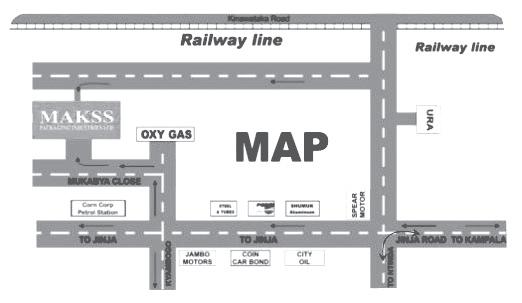
OFFERING WIDE RANGE OF PRODUCTS Strapping Tools, Seals, Metal Clips, Heavy duty stapling Machine, Staples, Stitching wire, Rubber Bands, Stretch wrap, Shrink & Cling film, PP Strapping rolls, Tenax strapping rolls, plain & custom printed gum tapes in all colours.
Adultrated fuel and old Vehicles dumped in Africa: the source of outdoor pollution in Africa

Director General Flavia Bustreo said. “For people to be healthy, they must breathe clean air from their first breath to their last,” she added.
Major sources of air pollution include inefficient modes of transport, household fuel and waste burning, coal-fired power plants, and industrial activities. But not all air pollution originates from human activity. For example, air quality can also be influenced by dust storms, particularly in regions close to deserts.
“The new WHO model shows countries where the air pollution danger spots are, and provides a baseline for monitoring progress in combatting it,” Dr. Bustreo said.
Developed in collaboration with the University of Bath, United Kingdom, it represents WHO’s most detailed outdoor air pollution-related health data ever, based on satellite measurements, air transport models and ground station monitors for more than 3,000 locations, both rural and urban.
Some three million deaths a year are linked to exposure to outdoor air pollution. Indoor air pollution can be just as deadly. In 2012, an estimated 6.5 million deaths (11.6 per cent of all global deaths) were associated with indoor and outdoor air pollution together.
Ninety-four per cent of the deaths are due to non-communicable diseases – notably cardiovascular diseases, stroke, chronic obstructive pulmonary disease and lung cancer. Air pollution also increases the risks for acute respiratory infections.
“This new model is a big step forward towards even more confident estimates of the huge global burden of more than six million deaths – one in nine of total global deaths – from exposure to indoor and outdoor air pollution,” said Dr. Neira, who is WHO Director, Department of Public Health, Environmental and Social Determinants of Health.
WHO’s Ambient Air quality guidelines limit annual mean exposure to particulate matter with a diametre of less than 2.5 micrometres (PM2.5), such as sulfate, nitrates and black carbon, which penetrate deep into the lungs and cardiovascular system, posing the greatest health risks. The Sustainable Development Goals (SDGs) of the 2030 Agenda, adopted at a UN summit last year, call for substantially reducing the number of deaths and illnesses from air pollution.
In May WHO issued a new road map for accelerated action with local health sectors increasing monitoring and assuming a greater leadership role in national policies affecting air pollution.
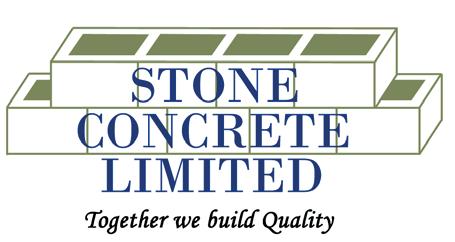






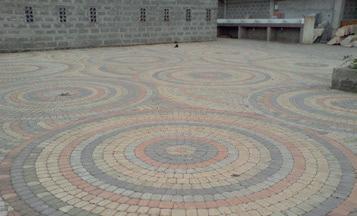


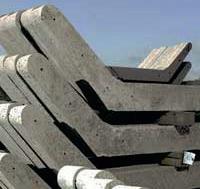





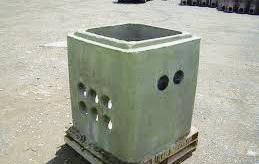
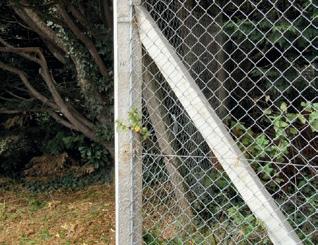

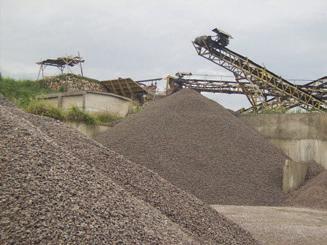
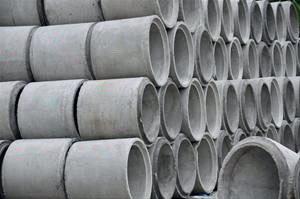


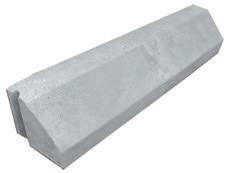
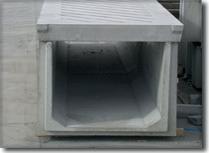
CO2 levels mark ‘new era’ in the world’s changing climate

Levels of CO2 in the atmosphere have surged past an important threshold and may not dip below it for “many generations”.
The 400 parts per million benchmark was broken globally for the first time in recorded history in 2015.
But according to the World Meteorological Organisation (WMO), 2016 will likely be the first full year to exceed the mark. The high levels can be partly attributed to a strong El Niño event.
While human emissions of CO2 remained fairly static between 2014 and 2015, the onset of a strong El Niño weather phenomenon caused a spike in levels of the gas in the atmosphere.
That’s because the drought conditions in tropical regions produced by El Niño meant that vegetation was less able to absorb CO2. There were also extra emissions from fires, sparked by the drier conditions.
In its annual Greenhouse Gas Bulletin, the World Meteorological Organisation says the conditions helped push the growth in the levels of CO2 in the atmosphere above the average for the last ten years.
At the atmospheric monitoring station in Mauna Loa, Hawaii, levels of CO2 broke through 400 parts per million (ppm), meaning 400 molecules of CO2 for every one million molecules in the atmosphere.
The last time CO2 was regularly above 400ppm was three to five million years ago, say experts.
Prior to 1800 atmospheric levels were around 280ppm, according to the US National Oceanic And Atmospheric Administration (Noaa).
The WMO says that the rise through the 400ppm barrier has persisted and it’s likely that 2016 will be the first full year when the measurements show CO2 above that benchmark, and “hence for many generations”.
While the El Niño factor has now disappeared, the human impact on climate change has not, the WMO argues. “The year 2015 ushered in a new era of optimism and climate action with the Paris climate change agreement,” said WMO Secretary-General Petteri Taalas.
“But it will also make history as marking a new era of climate change reality with record high greenhouse gas concentrations.”
The report also details the growth in other greenhouse gases, including methane and nitrous oxide. 2.5 times greater than in the preindustrial era, while nitrous oxide was 1.2 times above the historic measure.
The study also points to the impact of these increased concentrations of warming gases on the world’s climate.
Between 1990 and 2015 there was a 37% increase in radiative forcing or warming effect, caused by a build up of these substances, from industrial, agricultural and domestic activities.
While welcoming new initiatives like the global agreement to phase out HFC gases agreed recently in Rwanda, the WMO argues that nations must retain their focus on cutting CO2.
“Without tackling CO2 emissions, we cannot tackle climate change and keep temperature increases to below 2 degrees C above the pre-industrial era,” said Petteri Taalas.
“It is therefore of the utmost importance that the Paris Agreement does indeed enter into force well ahead of schedule on 4 November and that we fast-track its implementation.”
Around 200 nations who signed the Paris climate agreement will meet in Morocco in November to decide on the next steps forward.
Sources: http://www.bbc.com/news/ science-environment-37729033
TORORO CEMENT LIMITED: PROMOTING ENVIRONMENTAL SUSTAINABILITY AND DEVELOPMENT THROUGH CORPORATE SOCIAL RESPONSIBILITY

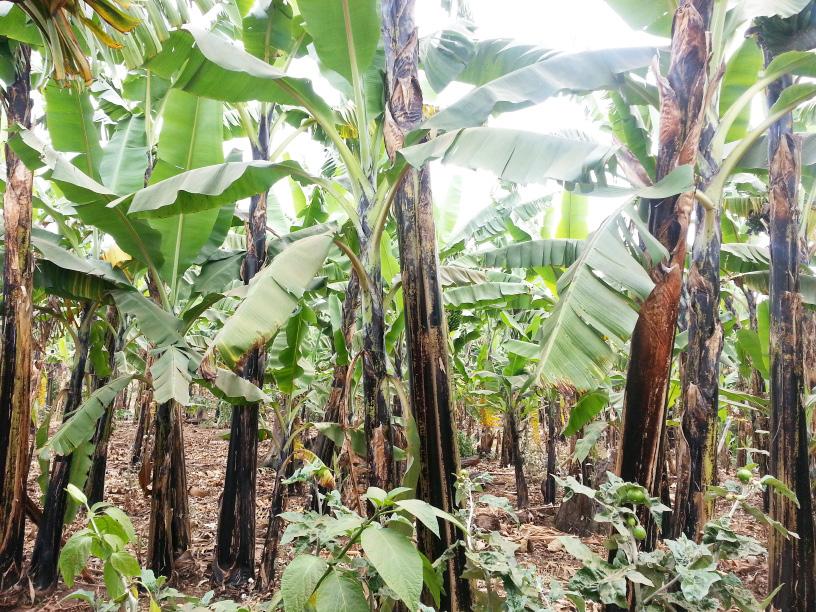
Press Release By Tororo Cement
Far-sighted organizational leaders recognize that lasting success must be built on credible business practices and the prevention of such actions as labour exploitation. In contrast, today’s competitive business organizations are finding it necessary to operate in a socially responsible manner to meet the needs of customers, consumers, governments, associations and the general public. This is to signify that, sustainable business and/ or lasting success for organizations means not only providing products and services that satisfy the customer, and doing so without jeopardizing labour practices and the environment, but also operating in a socially responsible manner.
Corporate Social Responsibility and Sustainable Development have now emerged as strategic elements of overall firm management extending the role of environmental responsibility well beyond the traditional scope of the Environmental Manager alone. In recent times, corporate environmental responsibility has evolved and expanded to cover substantially more than pollution prevention, waste minimization and legal compliance. Consequently, environmental management, once considered a sunken-cost, driven by legal compliance and liability, is now integrated as a survival as well as a competitive strategy. As a result, business enterprises of all sizes and types are now increasingly able to achieve a wide range of benefits from their efforts to design or re-design their products, services and operations while taking environmental concernsand Social Responsibility into consideration.
Tororo Cement Limited (TCL),the largest Cement Manufacturing Company in Uganda with a Cement Production Capacity of 1,800,000 metric tons per year (MTY) is cognizant that innovation is required to meet society’s demands, and that efficiency, market share, risk management, brand value and other core business functions are as critical to good environmental performance as they are to sustainable competition.
Subsequently, we have refined our approach to various elements of our environmental programmes including setting in-house goals that focus on environment, organizational governance, community involvement and development, labour practices and human rights, managing supplier/consumer relationsand reporting our commitments and environmental performance in relation tocorporate social responsibility.
Our Company has been able to move from good intentions to good actions through the following agenda:-.
BIOGAS PROGRANMME
In partnership with Uganda Manufacturers Association (UMA) and the Germany Agency for International Co-operation (GIZ) and Heifer Project International, Tororo Cement Limited designed and launched an energy efficiency programme focusing on biogas production.
The programme was designed for the local communities in Tororo District, Eastern Ugandawhere the factory is situated. Forty four (44) biogas plants worthy UGX 70,000,000 have been set up in four subcounties of Tororo.
This social investment has enabledthe local communitiesto access modern cooking facilities in their homesteads.
In addition, it has provided lighting for common purpose in homes and generation of bio-slurry, an excellent organic fertilizer. Lighting through biogas energy has reduced household expenditure on hydro electricity power (HEP) and Kerosene, resulting in increased household incomes. This has further enabled the beneficiaries to afford better healthcare, better education for their children and providing light for reading thereby increasing the literacy levels in these local communities.
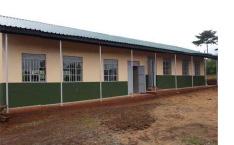
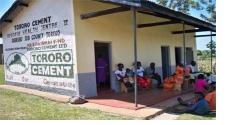
Biogas-slurry, a rich organic fertilizer, has promoted modern organic farming resulting in improvedcropand animal yields. This has led to improved food security in the area. Importantly, this programme has reduced the communities’ over dependence on wood fuel resulting in improved forest cover, rainfall patterns, reduced atmospheric air pollution and eventual protection of the ozone layer.
TREE AND BANANA PLANTATION PROGRAMME
Tororo Cement has designed a tree planting programme in Tororo, Kapchorwa and Moroto where it obtains its raw materials. About 26,562 trees seedlings have been planted in the three Districts. Specifically, Tororo has taken a share of 16,562 while the 10,000 has been shared between Kapchorwa and Moroto. On the other hand, over 120 acres of Matooke have been established around the factory premises.This programme has promoted increased food security for local communities and environmental conservation in these areas.
TRANSPORT AND ECONOMIC EMPOWERMENT PROGRAMME
Transport is a key factor in socio-economic development.Conscious of this, TCL has extended support to the community in the North by constructing 3 bridges in Moroto District facilitating an easy inter-connection between the East and North of the Country. This programme has boosted the region’s economic activities including better transport, agriculture and education services due to easy accessibility.
The company also assists in maintaining the roads in Amudat by fueling and providing a wheel loader to the district when carrying out road repairs in addition to contributing fuel for the Ministry of Works and Transport grader during road works. In terms of labour practices, we have since 2009 given the onus of excavating marble to the local community while giving minimum oversight. This has provided employment opportunities and increased household income to the local community.
EDUCATION AND HEALTH PROGRAMME
Education is the single most powerful tool that can be used to change the world while Health is Wealth. For us to be able to realize any change we need people who understand the circumstances that surround our environment and, to be able to create more wealth, we need healthy people. Tororo Cement is keen on this. We have supported the education sector in our areas of operation by constructing primary and secondary schools. Specifically, a two-classroom block was constructed at Kawowo Secondary School in Kapchorwa, and a four-classroom block put up in Moroto.
In addition, three students from Moroto have been supported from primary six upto University level through the office of the Prime Minister. Two have already completed and one is soon completing. In terms of health, we have constructed a community Health Centre III in Opedede Village in Osukuru Sub-County, Tororo District which now serves over 5,000 people around the local community.
The company has also distributed mosquito nets to the local communities in Amudat, Kapchorwa and Tororo including providing a Mobile Clinic Van in Moroto and Mattresses to Tororo Government Hospital. This has boosted education and health service provision in these areas.
Our approach and effort to operate in a socially responsible manner that society increasingly demands, has yielded us immense benefits. There is now a high sense of identity and belonging between the community and the company, importantly, we enjoy increased market share in the East African region and beyond.Tororo Cement Limited will continue to make a positive contribution to the world we live in �



